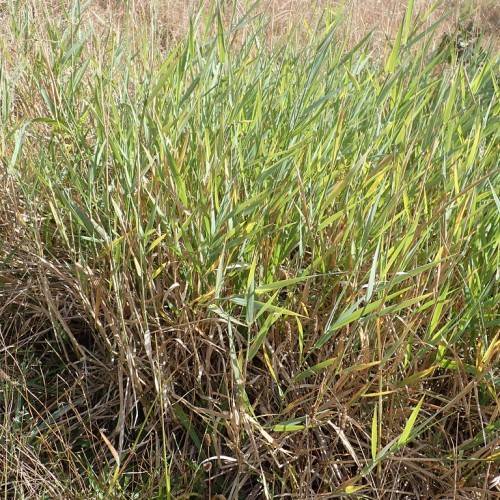
reed canary grass
Phalaris arundinacea var. picta 'Feesey'
Also Known As - ribbon grassCycle:
Perennial
Watering:
Frequent
Hardiness Zone:
4 - 9
Flowers:
Flowers In Summer
Sun:
Full sun, Part sun/part shade
Soil:
Acidic, Bog, Humus rich
Fruits:
Fruits In Summer Ready In Fall
Leaf:
Yes
Growth Rate:
High
Maintenance:
Moderate
Drought Tolerant:
Yes
Salt Tolerant:
Yes
Invasive:
Yes
Care Level:
Moderate
watering
Reed canary grass (Phalaris arundinacea var. picta 'Feesey') requires moderate watering for optimal growth. The grass needs to be watered once or twice a week, depending on the season and temperature. In the spring and summer, water it twice a week, about 1 to 2 inches of water per irrigation. During the hot summer months, water the grass 3 times a week. In the fall, reduce the watering to once a week, still using 1-2 inches of water. In the winter, the grass will require very little to almost no watering at all, depending on the rain fall and humidity in your area.
sunlight
Reed canary grass (Phalaris arundinacea var. picta 'Feesey') requirements for sunlight differ, depending on seasonal and climate changes. During summer, the best amount of light for this species is about 6 hours of direct sunlight per day. This plant should be placed in a brightly-lit area in late spring and summer, and moved to a partially shaded spot for fall and winter. In the winter months, reed canary grass tolerates a more diffused light for several hours a day, such as 3 to 5 hours of indirect sun. The ideal temperature range for this grass is between 65-80°F; anything outside this range could cause it not to thrive properly.
pruning
Reed canary grass (Phalaris arundinacea var. picta 'Feesey') should be pruned 2 to 3 times per growing season. Late spring is the best time to prune since this is when the plant is actively growing and the new growth is easily visible. Once the new spring shoots emerge, they should be cut back to 6–8 inches tall and downwards pointing, leaving 2–3 inches above the soil. Doing this will reduce the risk of the plant becoming too tall and will promote branching and a denser canopy. In early summer, the plant should be pruned again when the new growth reaches about 12 inches in height. This time, the shooting tips should be cut back to 8–10 inches tall and downwards pointing, while still leaving 2–3 inches above the soil. Once again, this will create a denser, more compact plant shape and promote deeper rooting. Finally, in late fall after the first frost has killed off the growth for the season, any dead stems should be pruned away. This will help to keep the plant healthy and tidy, and aid in the protection of new growth the following season.
